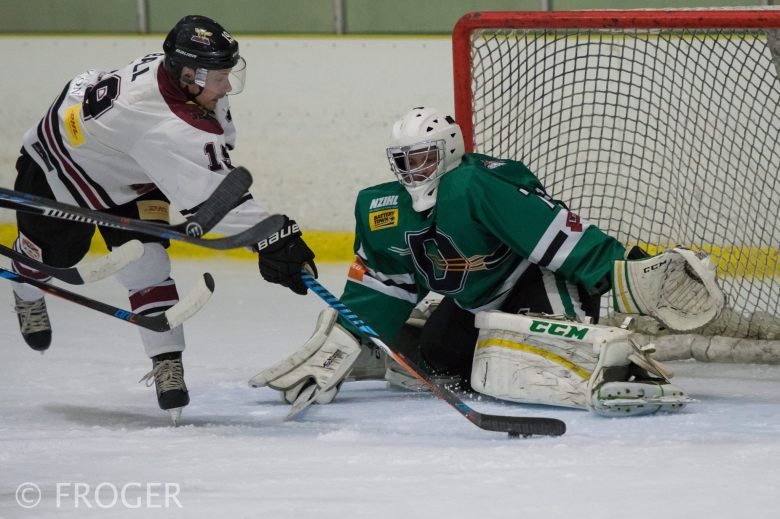While I can’t say I’ve done any sort of extensive research on it, I often have wondered about how the points system affects games and the coaching strategy within it. So I thought I’d compare three systems: FIFA, NZIHL, and the NHL.
First, let’s lay out the structure of how it works. Leagues value the outcome of games differently.
In soccer/football, FIFA changed the structure of points in the 1980s to three for a win, and one for a draw. This change was to give an incentive to go for a win and avoid a draw. The NHL in 1999 changed from the same two for win, one for draw into the system that exists today with two for a win still, one for an overtime loss. The IIHF/NZIHL format is three for a regulation win, two for an overtime or shootout win, one for an overtime or shootout loss.
Game Theory
So how does this affect coaching decisions? Should they at all? Are there ‘unintended consequences’?
Well, without assigning an emotion to them, we can start to see the incentive pattern involved. Not too long ago, hockey was like soccer in the sense that they were ok with draws as a result within their regular seasons. However, the NHL diverged from this idea and in 1999 they changed it to where the OTW gets two points, but the OTL still gets one.
So what has this done? I don’t have the statistics to suggest that the reality matches the theory, but the optimal outcome for an NHL game for any team is now to end regulation drawn.
How’s that? Any game ending at regulation awards two points, and any game that goes into overtime awards three. This means that on average, any OT game is 50% more valuable to the two teams playing in it.
If you compare the NHL to FIFA, you find the exact opposite scenario. If a win occurs, three points are awarded. If there is a draw, only two points are awarded. This means there is a 50% incentive to win over a draw on average. A team is rewarded for going for a win, but it’s not that simple. More on that later.
In the NZIHL, and IIHF, a three-level system rewards an outcome of any kind. This means that in regulation a win is worth three points, but if things can’t be decided the efforts of overtime are worth 1/3 of the regular game, and the two other points are split.

Strategy
Thus if we get into strategy, what does this mean in the real world? While it is speculative, my experiences seem to tell me a few things.
First, in soccer, this approach seems to reward offensive emphasis. Of course, this only exists in games where three outcomes are viable; if extra time and shootouts are around, this provides a very different game theory. However within a 90-minute contest, games have over a generation become more open and more likely to incentivise teams to work for leads in the first 80% of the game. However if teams enter the closing moments with the score locked up, they tend to be willing to accept the single point as an acceptable result. Conservative play in this area tends to be about ‘managerial preservation’, but it would still be a better play if the team needing points had a less-than-two-thirds chance of getting countered and beaten.
Heading over to the NHL, as I’ve already pointed out, teams actually have a true advantage of ending in a regulation draw.
Teams seem to play out fairly normally under the system because goals have a tendency to occur with consistency at any time of a game. While soccer has about 3.4 goals a match, hockey usually has about 5.5. This means that a goal occurs every 11 minutes, instead of the 26 or so in soccer.
Teams play defensively when entering with a draw, but teams just one goal behind have every incentive to win a point. Pulling a goalie with a reasonable amount of time to be effective is, as it always has been, a reasonable approach. One or three goal losses are only a mental balance; they have near zero significance elsewhere (Season Goal Diff is the final tiebreaker).
However once in a draw, a team has a chance to win another point based on a 5-minute 3v3 OT + shootout. These contests are worth “half of a regulation win”, and losing them has zero downside. Put another way, the Washington Capitals earned 118 points in 2016-17; most in the league. They won 55 games (incl. OT/SO). If they had drawn every game and won half of those, they’d have 123 points. Regulation draws are clearly encouraged by this system.
Finally, let’s discuss the NZIHL. It’s similar to FIFA, but it has an overtime point on offer like the NHL. Thus, you have elements where a win in regulation is vastly more important when compared to a direct opponent. You go three points clear of whom you beat in regulation, and only one point clear after an OT win. It values regulation as triple the effort, and OT shares the same spoils that were on offer otherwise.

So which one is best?
It’s impossible to say whether the intended outcomes are better or worse, but they all seem to be a mechanism for driving the kind of play that FIFA, the NHL, and the NZIHF want in their competitions.
FIFA want attacking football and I think that they have done it. They’ve dealt with issues about match outcomes in the World Cup, and generally have an equitable system for their game without overly punishing draws.
The NHL have a system that is designed to work towards parity and exciting finishes with skill as the tiebreaker and no fear of getting into a draw. The NZIHL takes an even approach in emphasising winning in regulation, but still offers a 2/3 win to the victors, and 1/3 to the OT losers.
Well, before I simply write off the NHL for being “unfair” in its offering, and saying NZIHL is clear in its offering, there is an amazing effect that the NHL gets in its public relations without much fanfare.
Within the NZIHL standings, you see a 3/2/1/0 (W/OTW/OTL/L) that you can always add up. It’s four numbers and people don’t relate to it. With the NHL, you have W/L/OTL. You get three numbers but really just two matter: wins and overtime losses.
A simple formula of 2*W+OTL=Points. But when you look at all of the records, the clubs have better (or at least better looking) win-loss records than they technically should. The wins column combines regulation and overtime victories since they’re worth the same amount of points. You also split OT losses out of the loses column and into the column that North Americans associate with a “draw”, which is what it really is. Thus even a team with less than half the points on offer can appear to have a “winning record”. It’s a mirage, but it works.
What do you think? Should the NZIHL adopt the NHL scheme or stick with the status quo? Feel free to leave a comment below.
(Main photo: Mike Froger)
]]>